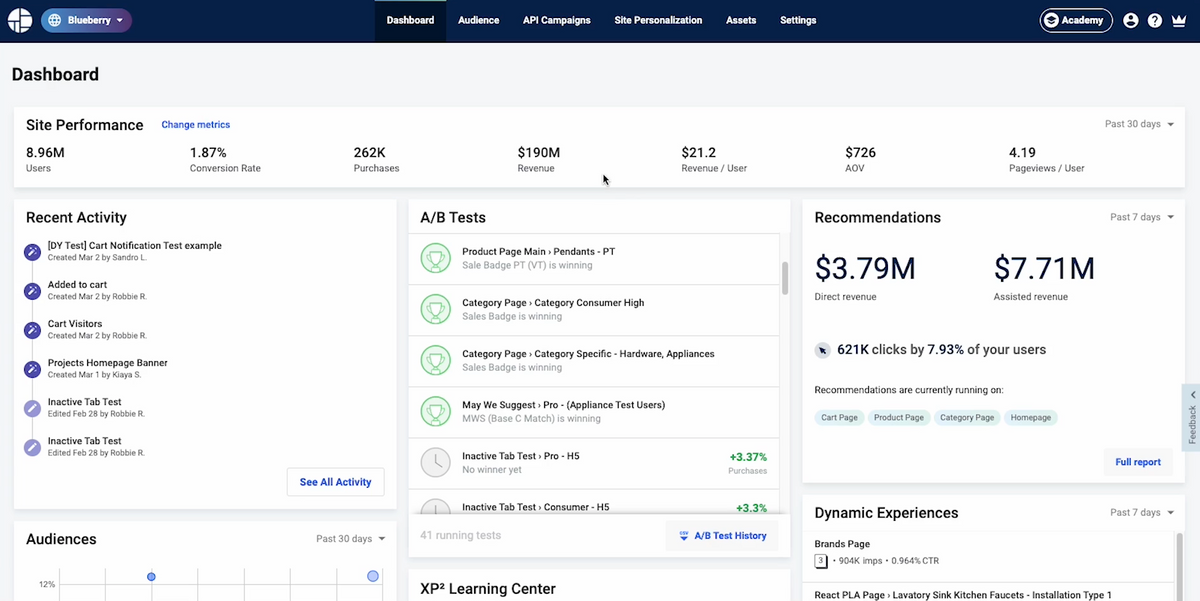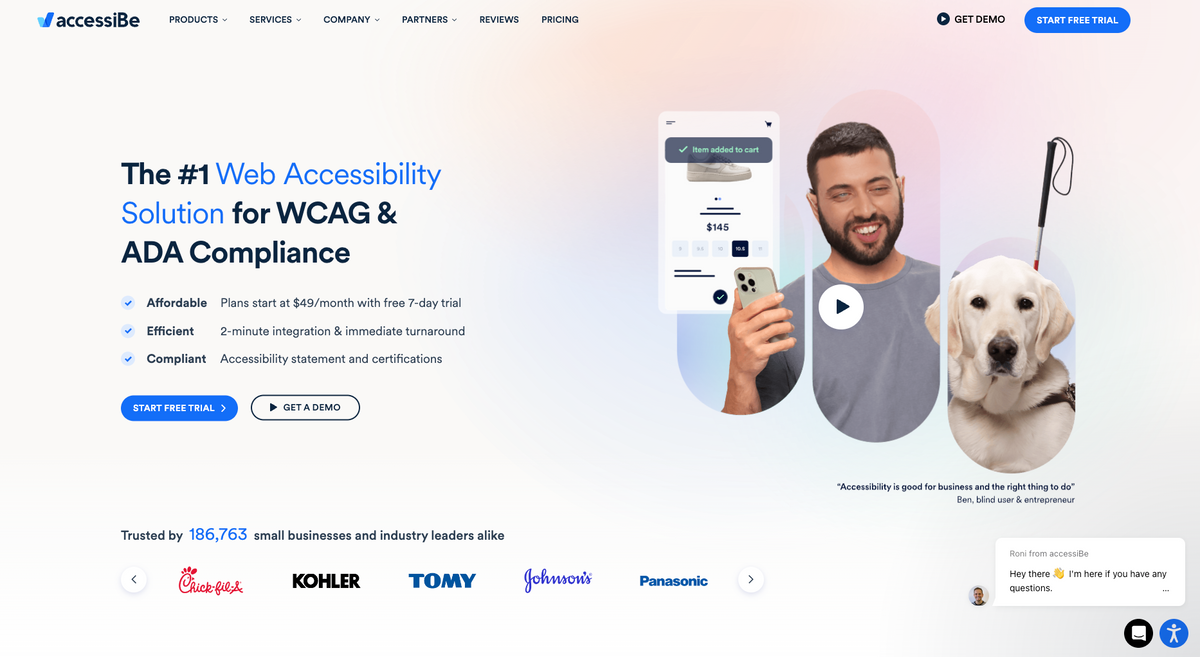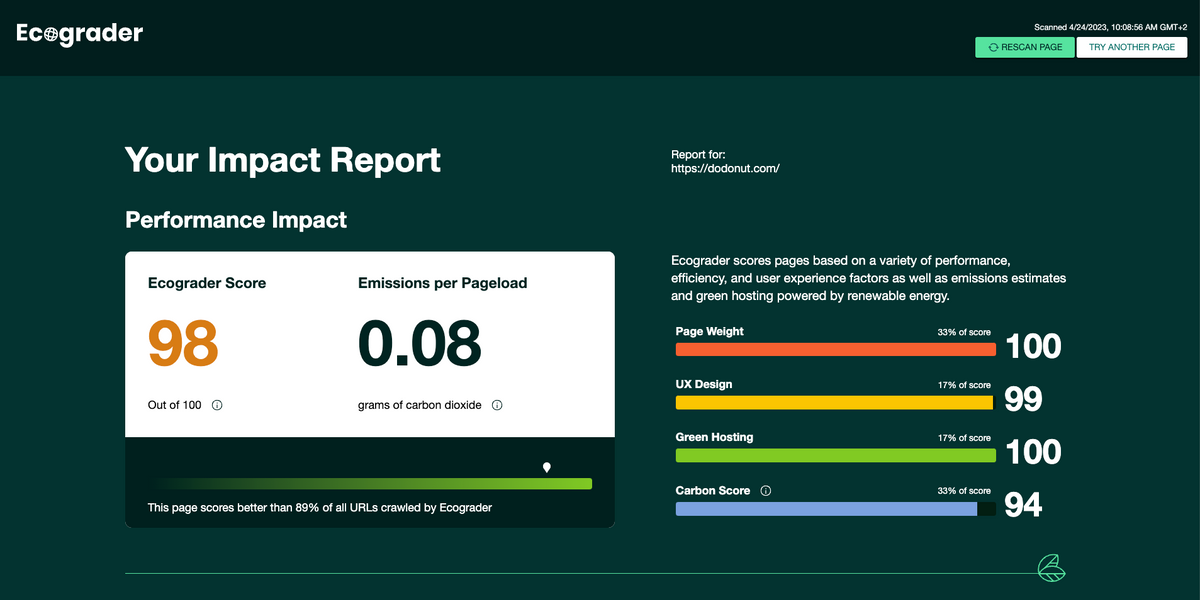Boost Your Web Design Efficiency With The Best AI Tools For Web Designers

Taiwo Sotikare is content strategist and writer in the B2B SaaS and MarTech industries.
Date added
Read time
12 minBy all means, AI revolutionized the work of web designers and developers. AI-powered design tools can improve workflow, streamline design processes, and reduce project-specific challenges.
The article explains:
- the different types of AI design tools available, including content generation tools, AI graphic design tools, design automation tools, and user behavior analysis tools, that can mimic or augment designers' decision-making and problem-solving capabilities
- how AI tools can provide real-time design assistance, analyze design elements, provide recommendations, and reduce the time and effort required for design iterations, leading to more efficient and effective design work.
Table of contents:
Artificial Intelligence (AI) is the focus of 2023 Q1. The emergence of AI-powered design tools, such as Microsoft's Sketch2Code, Wix ADI, 10Web, and others, have revolutionized the web design industry. According to market analysis, the AI software market will reach $118.6 billion in annual revenue by 2025.
As a web designer or developer, the euphoria of unleashing your creative potential on a project can quickly hit a wall when overwhelmed by project-specific factors, such as project management and methodology, resource constraints, and clear concepts. AI-based tools can drastically reduce these challenges and help bring your ideas to life with sleek and elegant designs. Therefore, the rush of seeing your concepts come to fruition is now within reach.

How AI Has Revolutionized Web Design and Web Development
As designers increasingly rely on technology, artificial intelligence (AI) plays a more significant role in web design. In the past, web design was typically the responsibility of a single designer or team using code and pre-designed templates. However, recent technological advancements have enabled AI to create websites with little or no human interference.
One of the earliest forms of AI applications in web design was Grid AI, which has since been renamed Lightning AI. This Artificial Design Intelligence (ADI) tool was capable of creating custom websites based on project requirements and brand preferences. Today, other tools have emerged and are helping designers work more efficiently. These ADIs also go beyond design and can assist with web development, testing, personalization, UX design style, user behavior analysis, and content generation tasks. As a result, the future of the web design industry is a merge of AI and human designers. ADIs assisting human developers will streamline the process and upscale efficiency in companies.
What are AI (Artificial Intelligence) Tools
AI tools are software applications that simulate human intelligence and use artificial intelligence (AI) algorithms and techniques powered by advanced computer algorithms and mathematical models that enable machines to learn from data, identify patterns, and make decisions or predictions based on that data.
The role of AI web design tools is to mimic or augment designers' decision-making and problem-solving capabilities. They can perform complex tasks such as creating customized website designs, generating content, analyzing user behavior, personalizing website content, and even testing website performance quickly and accurately, often with minimal human intervention.
Types of AI Tools for Web Designers
Numerous powerful AI tools contribute to different aspects of the web creation process, from content generation to user behavior analysis tools. Here is a breakdown of 6 types of web design AI tools based on categories and classification.
Content Generation Tools
Content is an essential aspect of the web design process. Its essentiality range from the initial development process of the website, by giving users information on how to navigate the website, to serving as marketing resources, via blog post to drive traffic and generate website leads.
Hence, content creation tools are a valuable asset for entrepreneurs and individuals seeking to produce top-notch content with ease and speed. AI tools such as:
and other Natural Language Processing (NLP) algorithms automatically generate tailored written content based on instructions. Users can quickly produce content that matches their needs by giving these AIs well-detailed prompts highlighting topics, tone, and style.

For visual content, which is equally important and even easier to understand, web designers may use AI graphic design tools and design platforms such as:
and other AI graphic tools and image generators.
For instance, Khroma is an AI tool that helps graphic designers choose the right color palette for their projects and a color tool you can train through the selection of 50 of your favorite colors. On the other hand, DALL-E is an AI language model and AI image processing tool that can generate images and AI art from textual descriptions, while Midjourney allows web designers to create customized product images in seconds. These tools mostly can be used by people without design skills and reduce the manual work required for designers and can help them to be more efficient.

Design Automation Tools
AI creative tools have continually disrupted the creative industry - from generating realistic, actionable images to creating elegant and appealing web layouts, components of web design, UI design ideas, or even final design. Organizations have begun to utilize ADI tools such as Adobe Sensei, Autodesk Dreamcatcher, Designs.AI, Framer X, and several others to optimize their strategies and achieve their goals faster. Artificial intelligence for web provides:
- real-time design assistance,
- analyze design elements,
- provide recommendations, which helps designers make informed decisions quickly,
- reduce the time and effort required for design iterations.
This augmentation of design skills can lead to more efficient and effective design work. ADI can be used in graphic design to create projects much faster, and complete time-consuming tasks, permitting designers to focus on other aspects of the process. For example, if you need multiple versions of art or a unique design for your website, AI automation tools like Adobe Sensei can easily automate this operation. You can check out some of our top 15 Figma plugins for designers in 2023.
User Behavior Analysis Tools
Every website owner or designer knows that attracting and retaining visitors is the most critical aspect of monetizing a website. Even with this fact, it's easy for visitors to slip through the cracks and get disengaged from your website. A website with poor user experience can lead to a chain of consequences, including higher bounce rates, poor SEO, loss of prospects and sales, and website failure.
Hence the need for user behavior analysis (UBA) AI-powered tools, such as:
Via machine learning, these AI tools analyze how visitors can or will interact with websites and products. Designers can use data from this analysis to easily enhance UI UX design. Overall, user behavior analysis AI helps automate documenting and analyzing user behavior for better productivity.
Personalization Tools
As the e-commerce industry evolves, numerous organizations push their businesses online to earn internet-driven profit. As easy as that sounds, you would be surprised how many companies fail due to the overbearing competition and inability to manage their websites properly. One of the primary reasons for a business's failure can be attributed to enterprise tools that directly deal with user experiences.
AI personalization tools like:
lean heavily on machine learning and data collection. Designers can get insights from the data collected to create a targeted and relevant experience for every user. AI personalization tools help you create websites that improve user and business interaction rather than a generic site design. By creating a more personalized website experience, businesses get a higher chance of converting leads to sales and a highly successful online future.

Currently, the market for website personalization is anticipated to grow to $10.95 billion in 2023, according to a MarketsandMarkets analysis. And the key driving force for this explosive growth rate is the increased use of AI tools in website personalization.
Chatbots
Chatbots are now a fad in the web design industry. Quora, Snapchat, Bing, and others have integrated AI chatbots on their web pages, making it a thing, even outside eCommerce websites.
AI-based Chatbots leverage AI and machine learning to understand natural language and provide tailored responses to users' queries. It is programmed to closely mimic human behavior and interact smoothly with website visitors. As a result, it boosts user experience on a web page, allowing users to enjoy a personalized experience, ask questions, receive answers, and interact with the website in real-time. It also boosts website functionality, helping users to navigate different website pages and ensuring they achieve every purpose without misleading them.
A publication by Forbes reveals many businesses are quickly adopting chatbots to their systems. Over the past few years, chatbots have upscaled marketing and scaled by 67%. Chatbots answer FAQs, make recommendations, and handle customer complaints. Many customers are okay with it if they are responded to by humans or AI, as long as the delay is eliminated in their business process.
Meanwhile, it is worth mentioning that not all Chatbots use AI-based chatbots. There are rule-based chatbots that use a set of predefined rules to respond to user input. In contrast, AI chatbots use natural language processing (NLP) and machine learning algorithms to understand and respond to user input.
Testing and Optimization Tools
In web design, a website requires more than creating and designing before it is launched. A website must undergo tests and optimization to confirm site performance and seamless user experience.
There are many AI web design testing tools, such as Google Optimize and Optimizely are readily available. These tools help ensure your website checks all responsiveness, security, and stability areas.
Regarding website optimization tools, these are critical in maintaining growth on your website. After designing your website and imbuing engaging content, the next step is to optimize your website to help you keep ahead of the competition and preserve user experience.
5 Ways AI Design Tools Improve Web Design Efficiency And Web Design Process
Automating Repetitive Tasks
AI-powered tools can automate repetitive tasks in web design, freeing up designers' time and allowing them to focus on more creative and strategic design decisions, such as user experience (UX) design, interaction design, and visual design, where human creativity and intuition are treasured. With the blink of an eye, thanks to AI web design tools, designers can minimize so-called mood-killing tasks like removing background, creating rapport and updates for stakeholders, or preparing UX briefs and case studies. They effectively analyze website layouts and suggest improvements based on user behavior and other data.
They can also generate design suggestions based on established design principles, helping designers create websites that are visually appealing and easy to navigate. For example, designers can ask ChatGPT tool to generate a CSS or JavaScript code for a GIF button or ask Microsoft's Bing chat to generate HTML, CSS, and JavaScript code based on a website's design.
Similarly, artificial intelligence in web design tools can automatically optimize images for the web, such as resizing images, compressing them to ensure fast loading on the website, and converting them to different file formats when required.
Enhancing Website Accessibility
Website accessibility is becoming significantly important in the 21st century. Aside from costing you sales, building a website that is not accessible to people with disability can impair your brand identity and even expose you to legal fines.
AI tools like AccessiBe, AudioEye, Axe by Deque and ARC Toolkit can significantly enhance website accessibility by examining its structure, content, and functionality while suggesting improvements to ensure that it meets WCAG conditions for users with disabilities. It can also automate incorporating these accessibility features to websites like screen reader optimization to automatically add alt-text descriptions to images for visually impaired users, natural language processing, and keyboard navigation tools to help users navigate websites using only a keyboard.
Captioning tools automatically generate captions for videos on the website, making them accessible to people with hearing impairments, and voice recognition tools help users interact with websites with voice commands. You can check out our comprehensive guide on inclusive accessibility – an experience designed for everyone.

Improving Workflow and Collaboration
AI-powered tools, like ClickUp, Asana, Jira, and GitHub can facilitate web design team collaboration and workflow by providing project management tools to analyze task dependencies, deadlines, and resource availability to prioritize tasks intelligently. This can help teams focus on high-priority tasks, manage their workload effectively, and ensure that critical tasks are completed on time, improving workflow and project outcomes.
AI tools can make remote working for web developers more flexible by providing centralized and collaborative project management platforms for remote teams to plan, track, and manage projects. These platforms offer workflow and task automation such as scheduling, setting up virtual meetings, transcribing meeting notes, generating action items, and providing real-time language translation for participants who speak different languages, making remote meetings more efficient and inclusive.
Enhancing Speed and Accuracy
Speed is an integral part of a website. According to Colorlib,
- 70% of surveyed consumers say page speed impacts their willingness to buy from online retailers
- 47% of online shoppers expect web pages to load in 2 seconds or less
- 40% of online shoppers abandon websites that take more than 3 seconds to load
- 52% of online shoppers say quick loading times are essential to their loyalty
AI-powered tools such as Google Lighthouse, Ecograder and Statsy can detect performance bottlenecks, identify areas that need improvement, and provide recommendations for optimizing website speed and accuracy in real-time.
They can enhance website speed and accuracy by continuously monitoring website performance and collecting and analyzing data related to page load times, server response times, and other performance metrics. They also boost website accuracy by automatically detecting and correcting website errors, such as broken links, missing images, and other issues affecting accuracy.

Aiding With Complex Design Decisions
Designers sometimes need help with designer's block or buzzkill when dealing with complex design concepts. AI-powered tools, such as:
- Uizard,
- UXPin,
- Adobe Sensei,
- and Framer,
can analyze vast amounts of data, including historical design data, user feedback, and market trends, to provide designers with data-driven insights to make swift and informed design decisions. These AI-powered tools can offer designers unique angles and insights such as color schemes, typography, layout, and content placement based on what has proven effective in the past, improving the overall design decision-making process.
Similarly, it can help designers generate design variations based on specified parameters, such as design goals, user preferences, and design constraints. These tools can generate multiple design options quickly, helping designers explore a wide range of design possibilities and make informed decisions about which design approach is the most effective for a particular project.

Reducing Labor Costs
AI-powered tools can drastically reduce labor costs by serving as design assistance. AI can help designers to analyze design elements, suggest design recommendations, streamline the design process, and use graphic design to communicate better with users.
AI-based tools offer pre-built design templates that can be easily customized, eliminating the need for designing websites from scratch and making it easy for designers to haste their work and commence new projects.
Additionally, AI algorithms can generate content, such as web copy, microcopy and images, based on existing websites or competitor sources, reducing the need for dedicated content creators. It can also develop a better-personalized text to replace the old culture of Lorem Ipsum, which is much more responsive to the final needs—the same with slogans and CTA.
Furthermore, AI design software tools can automate testing and optimization based on user behavior data, allowing for quick identification and resolution of design issues. They can also facilitate collaboration and project management, automating tasks like version control and file sharing. Using AI-powered tools in different areas of the design circle will save the time and resources required for design and development iterations.
Conclusion
The development of AI has become a game changer in web design and modern web development. Designers who integrate AI tools into their work significantly improve web design flow and efficiency and productivity. With AI-powered tools, designers can create unique and personalized web designs in less time, efficiently improving user experience and reducing bounce rates. Businesses also use AI to generate and optimize websites, analyze user behavior, and automate many other tasks, making business processes more productive. With the future of web design being a merger of ADI and human designers, AI tools will continue to streamline the design process, change the way you design websites, and boost your efficiency in companies.
For more information on AI-powered web tools, check out our page on the best resources for AI tools. This page features a comprehensive list of top AI tools and resources for web design, including AI personalization tools, testing and optimization tools, and more.
References
-
Lee Jeffrey, "8 AI-Powered Design Tools that would change the way you design (and boost your efficiency)", UX Planet, Jul 14, 2020
-
Birch Nataly, "11 Best AI Tools for Web Designers", Designmodo, February 16, 2023
Need a Full-Stack Design Team?
Our team handles all aspects of design, making your ideas a reality.
This article emits ~0.23g of CO2.




